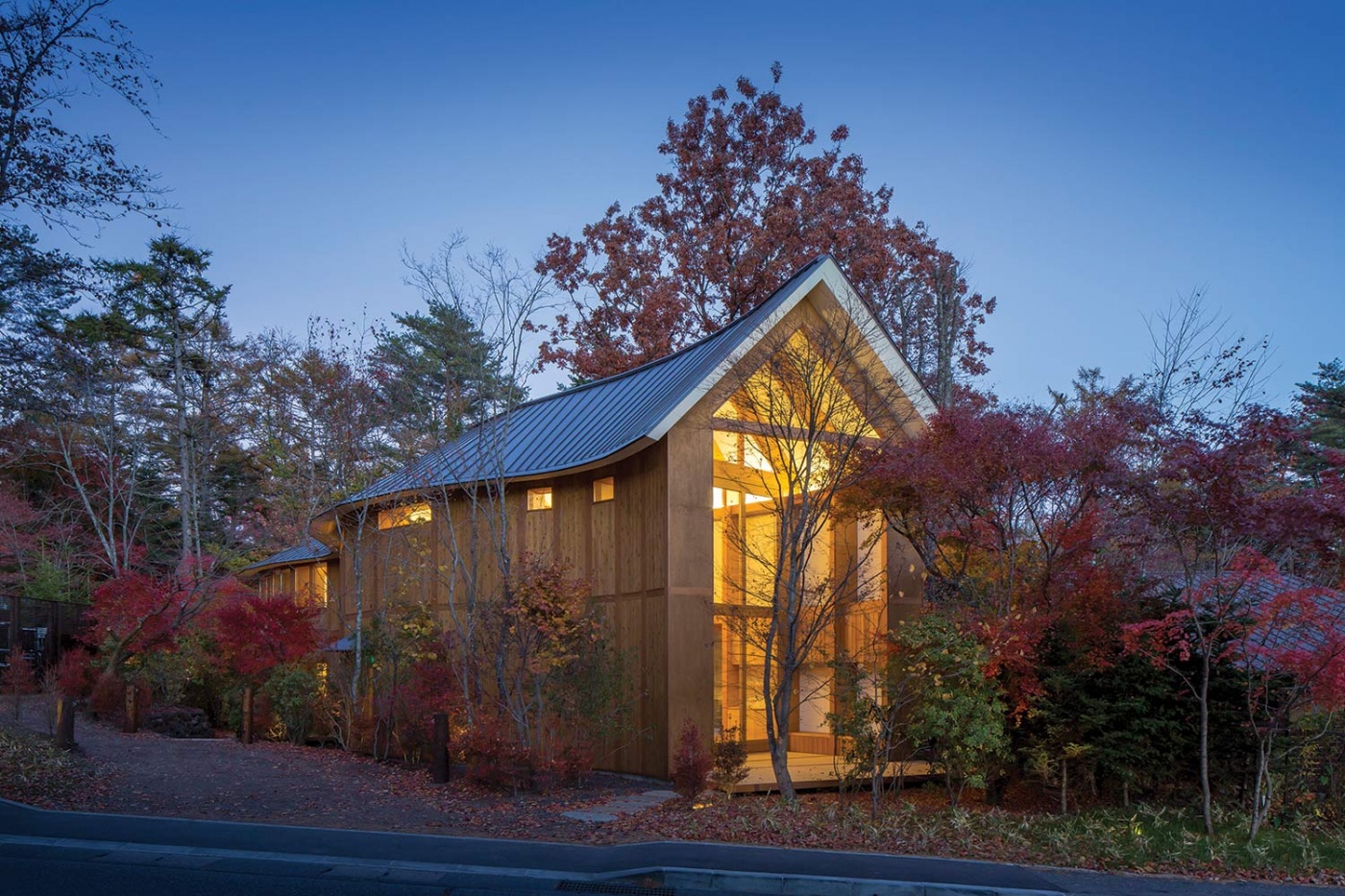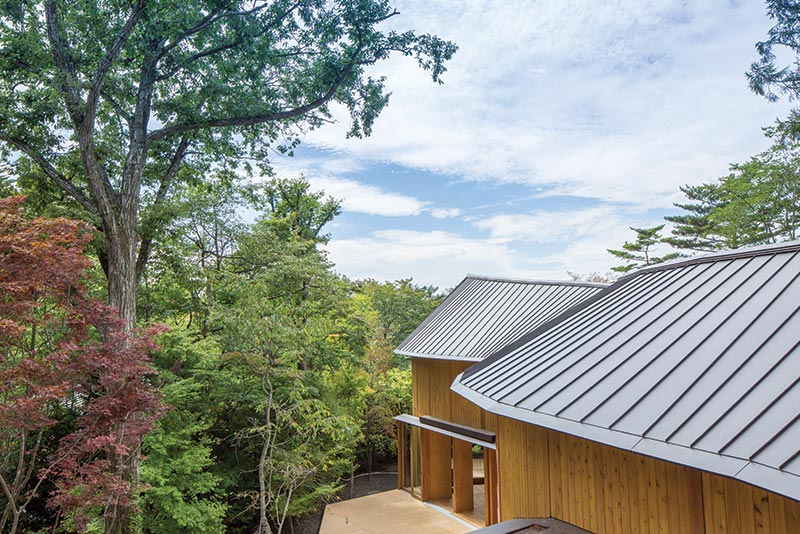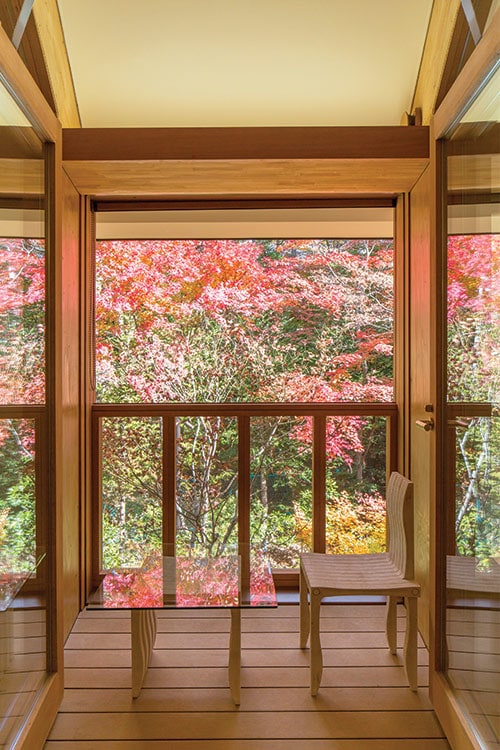Shishi-Iwa House: A Boutique Resort Designed by Shigeru Ban
Shishi-Iwa House, a 10-room boutique resort designed by Pritzker Prize-winning Japanese architect Shigeru Ban, has officially opened its doors in Karuizawa, Japan. The mountain resort destination in Japan’s Nagano Prefecture can easily be accessed by train about an hour from Tokyo.
Nestled within serene, verdant woods, Shishi-Iwa House is a two-storey retreat crafted in a smooth, curvilinear form with an undulating roof that flows with the movement of the forest. Ban’s design reflects his tenacious exploration on materials and techniques as a response to the site’s context. To minimise impact on the environment, Ban developed a new building approach that has never been used in hotel construction. With the goal of conserving as many existing trees in the property as possible, timber frames were sandwiched between pre-fabricated plywood panels to create a series of modular structural frames that were transported to the site and assembled to achieve the building’s curvature.
Shishi-Iwa House offers a total of 10 guest rooms divided into three terrace villas. Encouraging both private and social experiences, the property showcases a seamless flow of spaces designed with unique humanistic qualities. Guests are welcomed into the hotel through imposing timber-framed glass doors—the largest of its kind in Japan—to enter the Library and Reception Room, where they will check-in. The Library opens up to the resort’s garden featuring over 250 trees, ranging from evergreens, cherry blossoms to Japanese maples, that transform in colour with the seasons and create a living backdrop for guests. The Grand Room, a shared social space where guests can convene for lively discussions or exchanges, also offers direct access to the garden. An adjoining Catering Kitchen is fully equipped for hosting private dinners and professionally catered functions.
The Grand Room is linked to three connected clusters; each cluster is formed by a common area kitchenette and three to four guest rooms. Each Kitchenette is equipped with simple cooking and hospitality amenities to be used by guests, allowing independence and space to meet other travellers, or to be shared with other family members if more than one room is booked. Each Guest Room is a meditative retreat in itself, with scenic views of Mount Asama or the beautiful garden. With a combination of double and single accommodation, all rooms are equipped with their own bathroom and writing desk. Guest Rooms on the lower floor open out to a private garden, offering exclusive outdoor access while upper floor rooms incorporate a private balcony terrace—a unique feature of Shishi-Iwa House.
All interiors and furniture have been designed and selected by Shigeru Ban. Noted for the use of cardboard in his designs, Shigeru Ban has fitted out the bedrooms and public spaces with timber and paper tube elements for a unique interior ambiance. In the Grand Room and Library, alongside his own designs, Shigeru Ban has also selected furniture by one of the world’s most accomplished architects, Alvar Aalto. Other custom-made furnishings and lighting are also designed in similar materials to harmonise with the warm timber textures and materials.
Interior items are also carefully curated to complement the resort as a sophisticated and intellectual retreat. All tableware is by Miyama, one of the oldest traditional ceramic makers in Japan, while bedding, plush towels and robes are supplied by Ploh, a world-class brand name in premium bedscapes. For the bathroom amenities, the hotel team has specially selected 100% natural and biodegradable products by German brand Stop The Water While Using Me!, ensuring an overall refined and thoughtful in-room experience.
Matching the understated interior design is an exquisite art collection, including original works from Japanese masters of the Gutai period in the 1960s, such as Jiro Yoshihara, Toshimitsu Imai, Yasuo Sumi, Sadamasa Motonaga and Masaaki Yamada, as well as selected prominent international artists Zao Wu Ki, Seundja Rhee, Günther Förg and Bernar Venet.
Image Credits: Hiroyuki Hirai




